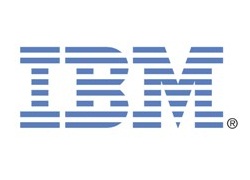IBM announced several new clients deploying cutting-edge Smart Building solutions built on the IBM Cloud, cementing the company’s commitment to transforming the buildings we live and work in into connected spaces, using Internet of Things (IoT) technologies. New contracts signed with Sodexo, Karantis, R +V Versicherung and HUF Haus, and existing relationships with KONE and Chameleon Technologies, are examples of IBM’s work fueling smart building innovation in connected work and home environments.
Today’s smart buildings generate massive amounts of data. The IBM Cloud provides the foundation to capitalise on this data by offering a powerful service delivery and consumption model that organisations can use to drive operational efficiency, innovation and improved quality of life through smarter buildings.
“Buildings have long mimicked living organisms – plumbing circulates through the walls, wires innervate every room, and concrete and beams provide skeletal support – but until recently, buildings lacked the most critical body part: a brain. The IBM Cloud is the cognitive centre that enables buildings we live and work in to serve our needs in new and unprecedented ways,” comments Bret Greenstein, global vice president of Watson Internet of Things (IoT) at IBM.

IBM provides a complete portfolio of offerings to support smarter connected spaces: for example, IBM’s cloud-based Watson IoT platform gathers and analyses exponential data volumes; IBM TRIRIGA helps to increase the operational, financial and environmental performance of a facility; and IBM Maximo provides asset management for real-time visibility of things within buildings.
In the home, IoT analytics coupled with AI capabilities in Watson Assistant enable home and in-home manufacturers, insurers and home care providers alike to cater for individual needs in innovative ways.
Connected Spaces
Sodexo turns to IBM Maximo to manage connected workplaces
Sodexo is a world provider in Quality of Life services that provides its customers with an integrated offering including food and facilities management services. Sodexo has selected IBM Maximo to transform its worldwide asset management function, and to meet the diverse needs of a wide array of client facilities and demographics, spanning offices, hospitals, research centers, schools and factories.
IBM Maximo provides Sodexo with real time data analysis and optimisation across 2.5 million assets, making it easier to streamline global operations. Building an asset management program around Maximo will layer further agility and flexibility into Sodexo’s existing IBM Maximo asset management as-a-service solution.
“At Sodexo, we are highly focused on the consumer journey, ensuring an optimal environment for consumers at all service touchpoints, and always looking for new ways to improve upon their quality of life through our facilities management capabilities,” Keith Hamer, vice president, asset management and engineering, Sodexo. “Through IBM Maximo, we are now able to deliver a better, connected workplace, which links these advanced technologies to the everyday consumer experience, from walking in the building to going to lunch to when they leave the facility.”
IBM elevates KONE’s people flow innovation with IoT
KONE is a global provider in the elevator and escalator industry, and moves around one billion people each day. By connecting elevators to the IBM Cloud-based Watson IoT platform, the company helps its customers increase the flow of people throughout buildings in many of the world’s busiest cities. KONE is also using IBM Watson IoT to bring the same experience to escalators. Visitors to CeBIT 2018 can experience the conversation between these machines with a virtual reality (VR) and 360-degree video demo on the IBM stand (Pavilions 34 & 35).
“Elevators and escalators are responsible for moving the equivalent of the population of the earth every week and of course they need to perform safely and smoothly,” says Hugues Delval, EVP, Service Business, KONE. “We are already working with IBM to analyse vast amounts of data from sensors embedded in elevators to identify and predict maintenance issues. At CeBIT we are showing how IoT, analytics and insights can take maintenance from the ordinary to the extraordinary.”
HUF Haus and IBM team to present the world’s first ‘learning house’

German pre-fabricated home manufacturer, HUF Haus, and IBM have partnered to create the first house in the world that learns from its occupants. Based in the HUF Haus model house park in Hartenfels, Germany, the smart bungalow named “Ausblick”, understands its residents through their interactions. Thanks to a network of sensors, data is collected in the IBM Cloud, analysed by the Watson IoT platform and transformed into insights about residents’ behavioural patterns.
HUF Haus uses Watson Assistant, IBM’s digital assistant to ensure the home and its occupants can interact together in a natural way. Through voice commands, facial recognition and understanding residents’ behavioural patterns, the HUF Haus learns how to optimise comfort for the occupants and adapts to changing living or working situations.
For example, the light in a home office can be switched on at a certain time or a PC can automatically be booted up based on the occupants’ daily work schedule. Residents always have control over the commands, which can be overwritten or reset at any time, for example via a touch display or by voice command.
“We are a family-owned company with a 105-year old home-building pedigree, but we recognise that the learning house is the future,” said Georg Huf, managing partner of HUF Haus. “With IBM we have found a renowned partner who accompanies us on our journey into the new age of living. Homes are getting smarter, and our customers take it for granted that the Internet of Things plays a large part in that transformation. With our self-learning show house “Ausblick” we are setting a new megatrend in the entire construction industry.”
Chameleon Technology’s I•VIE enables users to have a conversation with their energy
UK-based designer and manufacturer of in-home displays for smart meters and connected homes, Chameleon Technology, is using IBM’s enterprise grade voice assistant, Watson Assistant to create a new intelligent, interactive device for homeowners. I•VIE enables homeowners to control, interact with and understand their energy in new ways.
I•VIE pulls data from multiple sources including real-time energy used and retailer tariffs, the weather forecast, calendar data, electric car charge levels, and even driving patterns, to help homeowners better understand and control how and when they consume energy. I•VIE can offer ever more valuable insights, such as determining the optimal time to sell any additional energy back to the grid for maximum profit amid complex tariff rules and regulations.
Homeowners can ask I•VIE to check their schedule and identify what time they need to arrive at work the next day, and then I•VIE will automatically charge their electric car to the required level, set home temperatures, and use the most efficient source of power throughout the day, selling the excess back to the grid for a profit.
I•VIE can offer valuable money saving insights, and can tailor the home to suit customers’ lifestyles and budgets providing enhanced comfort, security and well-being. I•VIE removes the complexity from the digital energy landscape for the homeowner and helps them to save energy and money.
R + V Versicherung and IBM launch smart home project to provide emergency aid to senior citizens
R + V Versicherung, one of the insurers in Germany, in conjunction with Malteser Hilfsdienst, a not-for-profit non-governmental humanitarian aid agency, has selected IBM as a partner in a new smart home project designed to provide emergency assistance for vulnerable residents in medical emergencies.

In its initial pilot, the insurer equipped 25 apartments with sensors and modern security technology to identify emergency situations and immediately provide an alert when abnormalities occur. Using the IBM Watson IoT platform on the IBM Cloud, the system learns from the behaviour of each resident and establishes a view of their daily routine. Any anomalies to this can trigger a warning message.
For example, if an elderly woman who usually gets up at 8:00am is still in bed at a later time than usual, the system analyses this data and sends a warning message to healthcare professionals to intervene. Full results from this trial are expected by April 2019 and may be used to introduce new approaches to preventative care in the insurance industry.
“Smart Home is an interesting future market for insurers. We are very excited about what the future might hold, as a result of this pilot,” said R + V’s CEO Norbert Rollinger. “Temperature and smoke sensors measure the air in the room, a water monitor reports an overflowing sink or bathtub. Door contacts and motion detectors sound an alarm when something suspicious opens. Bed occupancy can also be recorded. The system quickly learns the personal habits of each resident so we can deliver a truly personalised service.”
IBM and Karantis build AI-Driven approach to assisted living for UK elderly population
UK-based care management provider Karantis has partnered with IBM to develop Karantis360, a smart cloud-based solution designed to enable assisted living through non-intrusive monitoring of individuals in their own homes, residential care, sheltered housing, or healthcare facilities. Leveraging IBM Watson IoT, delivered via a mobile application, Karantis360 learns changes in behaviour over time and flags exceptions to routines and habits as these occur.
Using IoT sensors via EnOcean Gmbh, it can track whether a patient has got out of bed, used the bathroom, boiled the kettle, or left the house, sending alerts via a mobile app in case of any unusual behaviour which may indicate a need for emergency intervention. Services like these may lead to national healthcare providers like the National Health Service (NHS) being better able to care for elderly patients, particularly those with Alzheimer’s or dementia.
“In the UK alone, there are now 10.8 million people over 68 years old, 97% of which would prefer to stay in their own homes. Developed in partnership with IBM, Karantis360 is a totally new development in assisted living,” says Nick Hampson, managing director, Karantis.
“We moved to the IBM Cloud to unlock the AI and IoT services which weren’t previously available to us and, combined with EnOcean GmBH sensors have now built a secure system designed to deliver genuinely smarter care with complete confidentiality and data security. This is a system trusted by clients and relied on by families and residents so that they can live more independently and safely in their own homes for longer.”
Comment on this article below or via Twitter: @IoTNow OR @jcIoTnow










